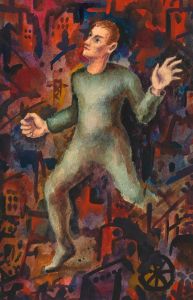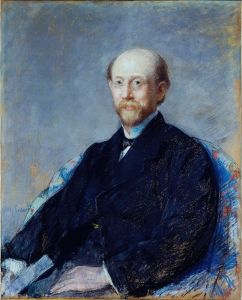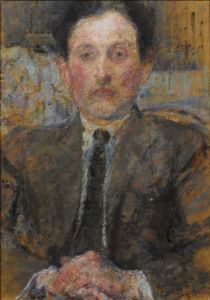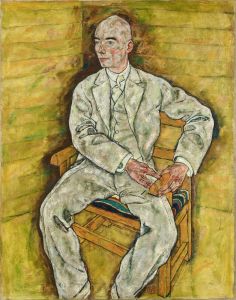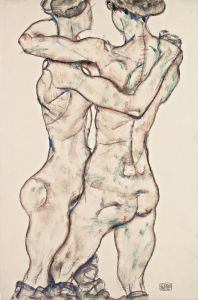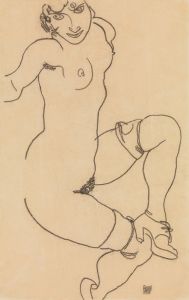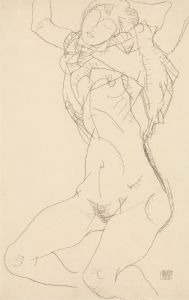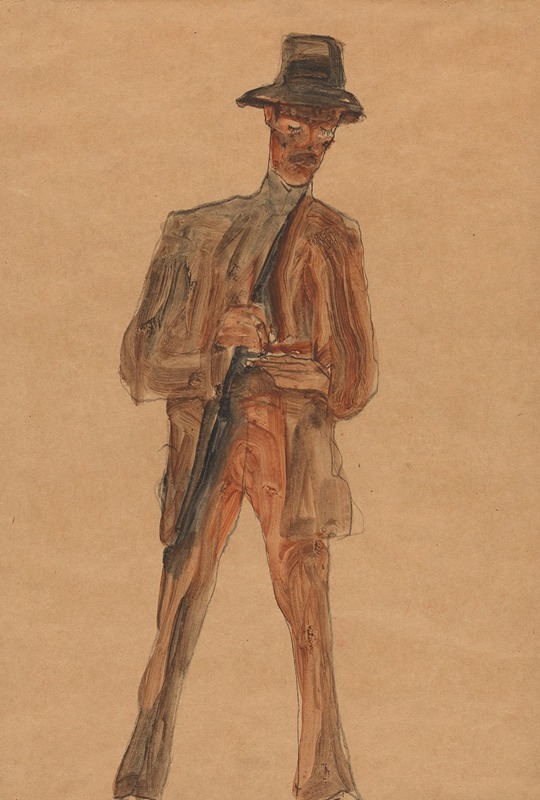
Franz Weigang
A hand-painted replica of Egon Schiele’s masterpiece Franz Weigang, meticulously crafted by professional artists to capture the true essence of the original. Each piece is created with museum-quality canvas and rare mineral pigments, carefully painted by experienced artists with delicate brushstrokes and rich, layered colors to perfectly recreate the texture of the original artwork. Unlike machine-printed reproductions, this hand-painted version brings the painting to life, infused with the artist’s emotions and skill in every stroke. Whether for personal collection or home decoration, it instantly elevates the artistic atmosphere of any space.
"Franz Weigang" is a painting by the Austrian artist Egon Schiele, who is renowned for his distinctive and often provocative style that emerged in the early 20th century. Schiele, a protégé of Gustav Klimt, is a significant figure in the Expressionist movement, known for his intense and raw portrayal of human figures and emotions.
Egon Schiele was born in 1890 in Tulln, Austria, and showed an early talent for drawing. He studied at the Academy of Fine Arts in Vienna, where he initially encountered the work of Gustav Klimt, who became a mentor and supporter. Schiele's work is characterized by its bold lines, striking compositions, and often unsettling subject matter, which frequently explores themes of sexuality, death, and the human condition.
The painting "Franz Weigang" is one of Schiele's many portraits, a genre in which he excelled. Schiele's portraits are notable for their psychological depth and the way they capture the essence of the sitter. Unlike traditional portraiture, Schiele's works often depict his subjects in unconventional poses and with exaggerated features, reflecting the artist's interest in expressing the inner life and emotions of his subjects.
In "Franz Weigang," Schiele employs his signature style, using sharp lines and a limited color palette to create a striking image. The painting reflects Schiele's ability to convey the personality and mood of his subject with minimalistic yet powerful brushwork. The composition is likely to be both intimate and confrontational, a common trait in Schiele's portraits, which often engage the viewer directly.
Schiele's work, including "Franz Weigang," is marked by a sense of immediacy and intensity. His portraits often reveal the vulnerabilities and complexities of his subjects, making them compelling studies of human psychology. Schiele's approach to portraiture was innovative for its time, breaking away from the more polished and idealized representations common in the 19th century.
Throughout his career, Schiele faced both acclaim and controversy. His work was sometimes criticized for its explicit content and perceived moral ambiguity. Despite this, he gained a significant following and his work was exhibited in several important exhibitions, including the Vienna Secession, an art movement that sought to challenge the traditional academic standards of the time.
Egon Schiele's life was tragically cut short by the Spanish flu pandemic in 1918, at the age of 28. Despite his brief career, he left behind a substantial body of work that continues to influence artists and captivate audiences today. His paintings, including "Franz Weigang," are celebrated for their emotional depth and innovative approach to form and composition.
Today, Schiele's works are held in high regard and are featured in major museums and collections worldwide. His contribution to the Expressionist movement and his exploration of the human psyche through art have cemented his place as one of the most important artists of the early 20th century. "Franz Weigang" remains an exemplary piece of Schiele's artistic legacy, showcasing his unique ability to capture the essence of his subjects with both sensitivity and intensity.







